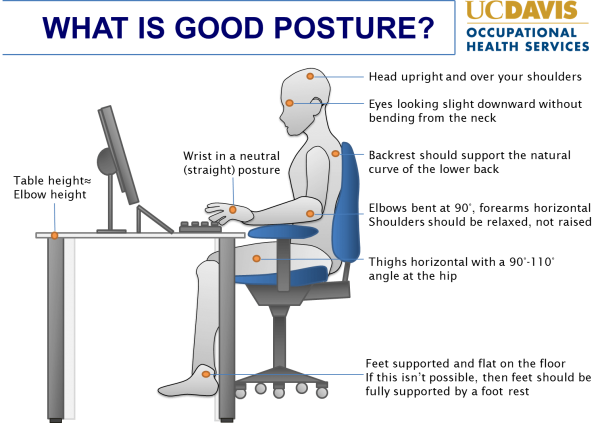Repetitive strain injury (RSI) occurs when a part of the body has done repetitive tasks to the point where pain and other symptoms appear. It often happens in the hands, wrists or arms, but any body part subjected to repeated movement can be affected. The condition impacts the ligaments, nerves, tendons, and muscles. You may also hear the term “overuse injury,” but that’s a general term for injuries that come from excessive use of muscles, tendons and soft tissues. These don’t necessarily occur from repetitive movement, which is the key difference in repetitive strain injury.
RSI – Repetitive Strain Injury
What is Repetitive Strain Injury?

Causes Of Repetitive Strain Injury
As its name implies, repetitive strain injury is caused by repeated movement. It’s not something which appears suddenly – repetitive strain injury is a cumulative trauma disorder (CTD) resulting from an excessive movement which is repetitive, forced, or awkward. Thus, it can take a while before you become aware that your body is trying to tell you that something is wrong.
Poor posture and technique, which can result in awkward or even overly forceful movement, do affect your body and can increase your chances of developing repetitive strain injury. This is something to keep in mind especially if you play sports or must sit for prolonged periods of time in front of a computer.
Repetitive Strain Injury Diagnosis
While repetitive strain injury is easily self-diagnosed, please be aware there is no specific test for it, since conditions like carpal tunnel syndrome, frozen shoulder, and so on can also occur in areas where repetitive strain injury is common. Consult a physiotherapist or other professional who is familiar with repetitive strain injury. They may suggest you do blood tests to rule out things like inflammatory joint disease. X-rays, scans, and nerve conduction tests may be administered. Biomechanics is another way to diagnose repetitive strain injury. This uses the science of mechanics to observe how the body moves, which can determine if you are overstretching muscles or jerking the affected body part when doing a task, both of which can lead to repetitive strain injury. Otherwise, repetitive strain injury is diagnosed based on whether the condition developed following a repetitive task and whether the pain goes away via rest from that task.
Repetitive Strain Injury Treatment
How RSI is treated depends on how bad it is and the underlying cause, and there is no one-size-fits-all treatment. However, the earlier it is detected and dealt with, the better the outcome.
- Adjust Your Work Set-Up To Reduce Strain As Much As Possible.
- Use Muscle Relaxant Tablets.
- Relaxation Techniques And Regular General Exercise Can Help Ease Symptoms (Swimming Is A Good Choice).
- Take Anti-Inflammatory Medications. Even Simple Painkillers Such Paracetamol Can Work As Well As Prescription Painkillers (Refer To Your GP When Taking Medicines Of Any Sort).
- Reduce Or Stop The Repetitive Task Which Caused Your Repetitive Strain Injury. This May Not Be Possible If You Make Your Living Doing Said Task. However, It Is Worth Talking To Your Employer To See What Accommodations Can Be Made.
- A Physiotherapist Can Advise You On Improving Posture And Exercises You Can Do To Strengthen Or Relax Your Muscles. They May Also Provide Ultrasound Therapy, Infrared Wave Treatment, Or Transcutaneous Electrical Nerve Stimulation (TENS).
- In Some Cases, A Steroid Injection Into The Affected Area May Be Suggested.
Symptoms often subside with the above measures. Surgery is considered if your symptoms are severe and non-surgical treatments provide no relief, or if there is a loss of sensation or wasting of the muscles.

Prognosis For Repetitive Strain Injury
Most people treated for repetitive strain injury fully recover within 3 to 6 months. The prevention steps listed in the next section can help speed recovery. There are times when people develop symptoms which persist long-term, however, and these can be debilitating.
Preventing Repetitive Strain Injury
There are some steps you can take to avoid or minimise RSI.
- Work on developing and maintaining good posture (speak to your physiotherapist to help with this).
- Gentle yoga and pilates can build core strength and flexibility.
- Take breaks when you are working – do some of the stretches shown in the video below (click on the link), walk around, perhaps look out the window at a distant object (this allows your eyes a rest break as well as your body).
- If you use a pencil or other writing utensil, avoid gripping it tightly; if you find that you must press too hard with the pen or pencil, get a new one.

New Client Offer - 10% OFF
Are you in pain? Not sure if we can help you?
Book your initial appointment and receive 10% off any service!